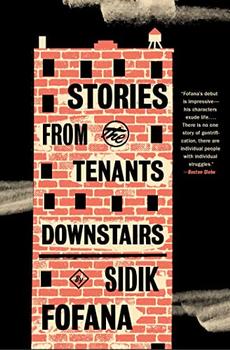Book Club Discussion Questions
In a book club? Subscribe to our Book Club Newsletter and get our best book club books of 2025!
For supplemental discussion material see our Beyond the Book article, Rent Control in New York City and our BookBrowse Review of Stories from the Tenants Downstairs.
Please be aware that this discussion guide will contain spoilers!
- In "Rent Manual," Mimi keeps a running tally of her finances as she goes from gig to gig to make rent. Why might the author have chosen to begin the collection with Mimi's story? What are some themes that are introduced here, that will recur throughout the book?
- Consider the sequence at the end of "Rent Manual," when Mimi and Fortune go to the grocery store across town to buy diapers. During this scene, Mimi recalls a time when her mother was made to feel out of place at a similar grocery store. How (if at all) do you think this memory influenced the decision she makes at the very end of the chapter? Based on what you've read, how do you understand Mimi's relationship with her mother?
- Open your book to "The Okiedoke," and read from the text break on page 54 to the end of the story. In your opinion, what might the heat described in the final two paragraphs of the story symbolize? Do you think Swan's perspective on his friendship with Boons develops between the beginning and end of the story? If yes, how so?
- In the following passage, Ms. Dallas describes teachers like Mr. Broderick: "They fresh out of college with a magic wand. They done read all the articles. Believed every news show that said public schools and teachers in the ghetto is falling apart like pie crust. Watched every feel-good movie, thinkin about twenty-two they can come in here and set the world right in minutes. All the while, they bidin they time til law school." Later, she says "I also believe that people who don't learn lessons should still get taught." In your opinion, what is the "lesson" she wants Mr. Broderick to learn?
- At the beginning of "The Young Entrepreneurs of Miss Bristol's Front Porch," Kandese Bristol is confident that the news station will report on their candy store. All the young entrepreneurs need to do to make it happen, she says, is write them a letter. A response from the news station arrives at the end of the story, and the story's narrator assumes the worst, even before she's read it. In your opinion, what purpose do these details serve in the story? What might the hope for news coverage represent, and what can we make of the narrator's pessimism at the end?
- In "Camaraderie," we encounter Darius for the first time since "Rent Manual." How have Mimi's decisions from "Rent Manual" impacted Darius?
- To whom does Najee Bailey address his letter in "lite feet"? Why does he feel personally responsible for the events revealed at the end of the story? In your opinion, is it fair for him to assume this responsibility? Why or why not?
- "lite feet" is the only epistolary story (a story written in the form of a letter) in the collection. Why might the author have chosen to write this story in this way? How does the story's epistolary form affect your reading experience?
- In "Tumble," most of what we learn about Kya is from Quanneisha's perspective. It is only at the very end of the story that we meet Kya for ourselves. Were you surprised by Kya's behavior in the elevator? Does this final scene make you question any aspect of Quanneisha's version of their story? Why or why not?
- In "Federation for the Like-Minded," what is Mr. Murray's complaint about Emeraldine and the Banneker Terrace Committee of Concern? Why do you think he ultimately decides against confronting them?
- Flip back to the "Intro." The final lines of the opening poem are "Everybody got a story, everybody got a tale/ Question is: is it despair or prevail?" As described in "Rent Manual," Banneker Terrace is under new ownership and a rent hike is looming. When you reached the end of the collection, did you feel optimistic about the future of Banneker Terrace and its residents? Why or why not?
ENHANCE YOUR BOOK CLUB - Discussion question: Gentrification is a central theme in this collection; it is also a central economic pressure in nearly every American city. What is gentrification? How have you observed its effects for yourself?
- Activity: In honor of Mr. Murray, bring a few chess boards to your next book club meeting. Hold a friendly tournament, or simply learn to play with friends!
- Further reading: For more linked short story collections, consider The House on Mango Street by Sandra Cisneros, The Women of Brewster Place by Gloria Naylor, and Drown by Junot Diaz.
Unless otherwise stated, this discussion guide is reprinted with the permission of Scribner.
Any page references refer to a USA edition of the book, usually the trade paperback version, and may vary in other editions.
